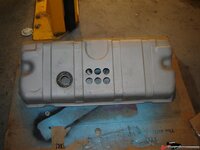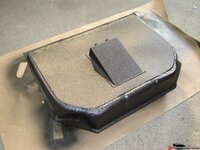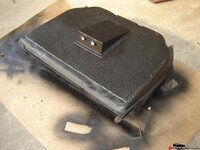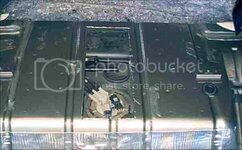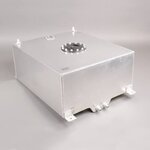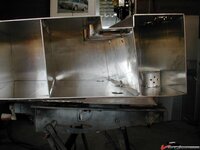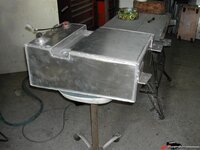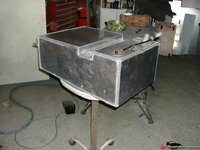So I should just block off one of the lower ports and put in a return bung on the top of the tank. The splashing of the fuel in a tank that is not full will not cause a problem?
It's not the splashing so much as the possibility that the tip of the suction line to the fuel pump will become uncovered with fuel. This could happen with a low fuel level in a turn, for example. If this happens, even for a split second, air is drawn into the line forming a bubble. It's harmful to the pump and when the bubble hits the injectors you'll get a misfire or a complete stall of the engine.
I re-used my sending unit and mounted a sump below the tank. It's worked pretty well now for a few years. Since the sump is actually below the tank, my gauge will read empty even when there is a gallon of gas covering the pump suction line. No chance of air getting into the line. I return the fuel at the bottom of the tank (blue line) so that there is no aeration or foaming of the fuel when it is returned to the tank.
I also left the sending unit in the tank and just capped off the old line. That way the gas gauge still works.
Returning the fuel at top or bottom make no difference from a weight standpoint (TT), because gasoline just doesn't weigh that much. The static pressure from gravity on a foot or two of gas is negligible...and if both feed and return are from the same tank, the net differential is zero (otherwise, you'd have perpetual motion).

